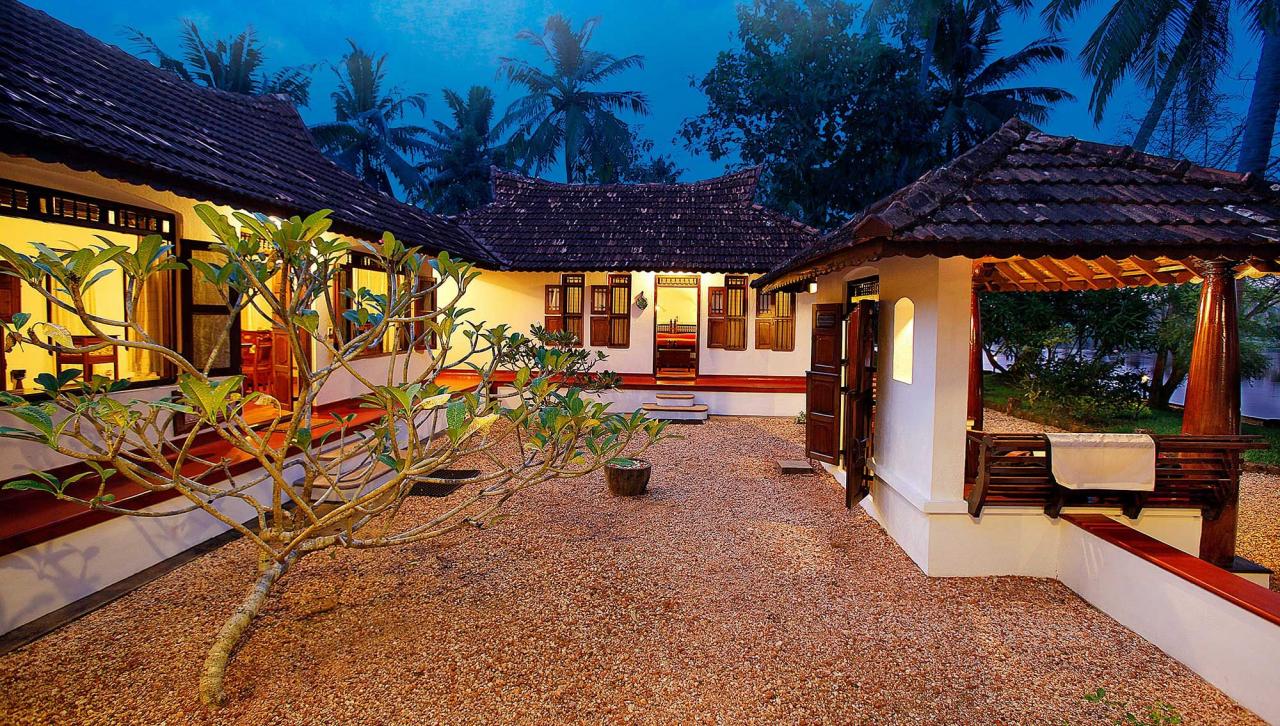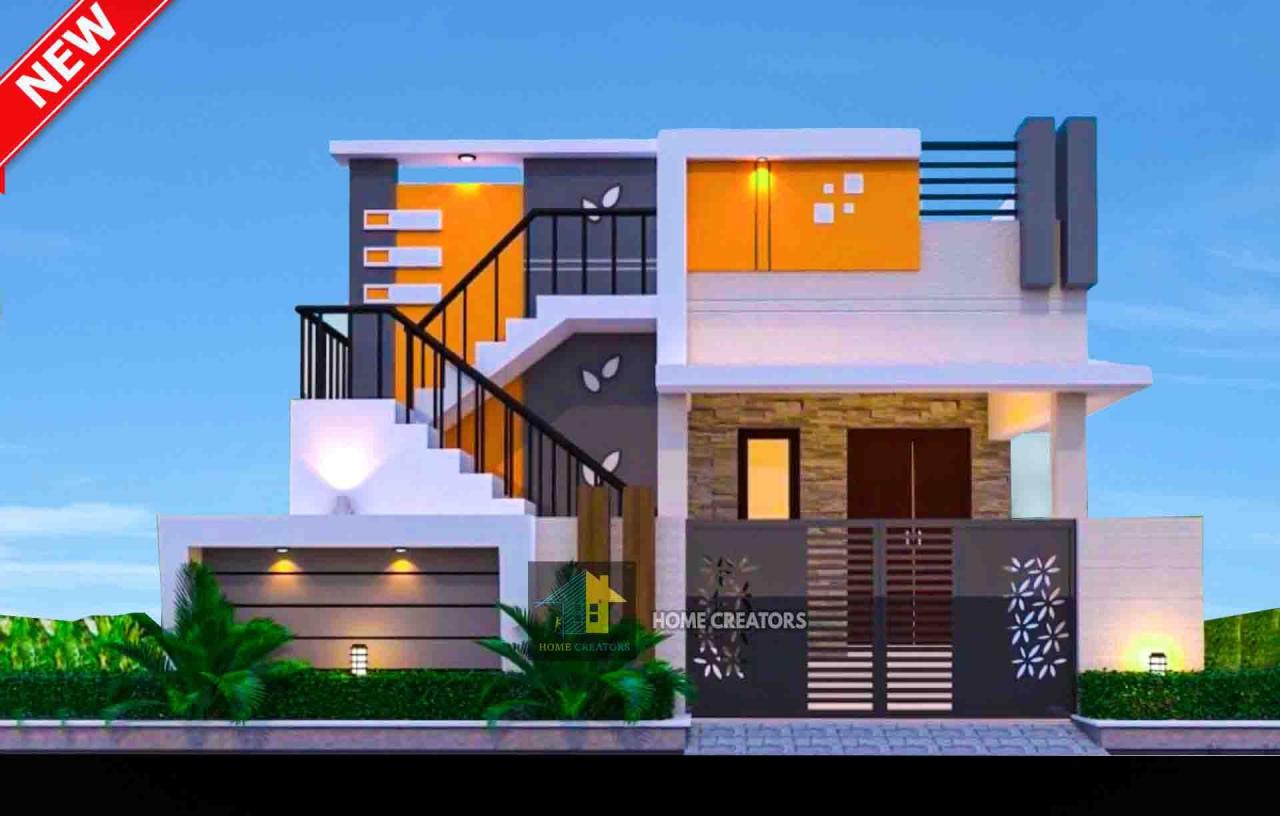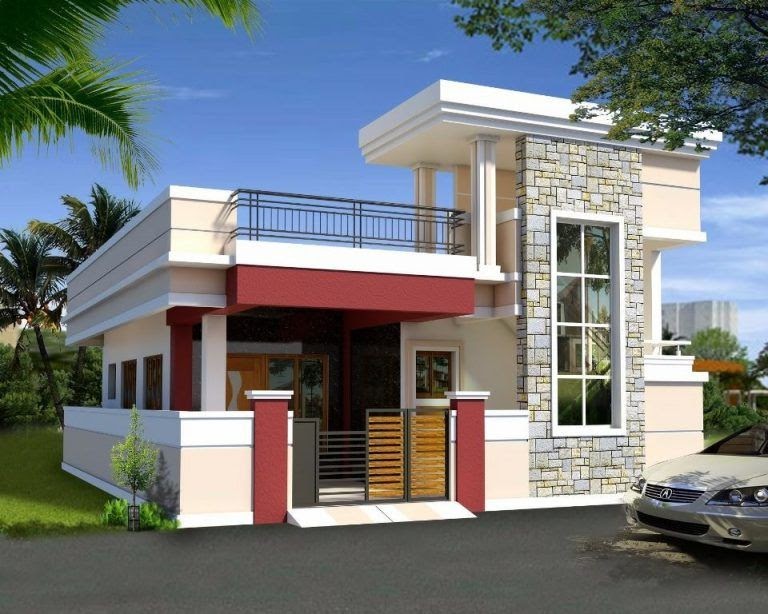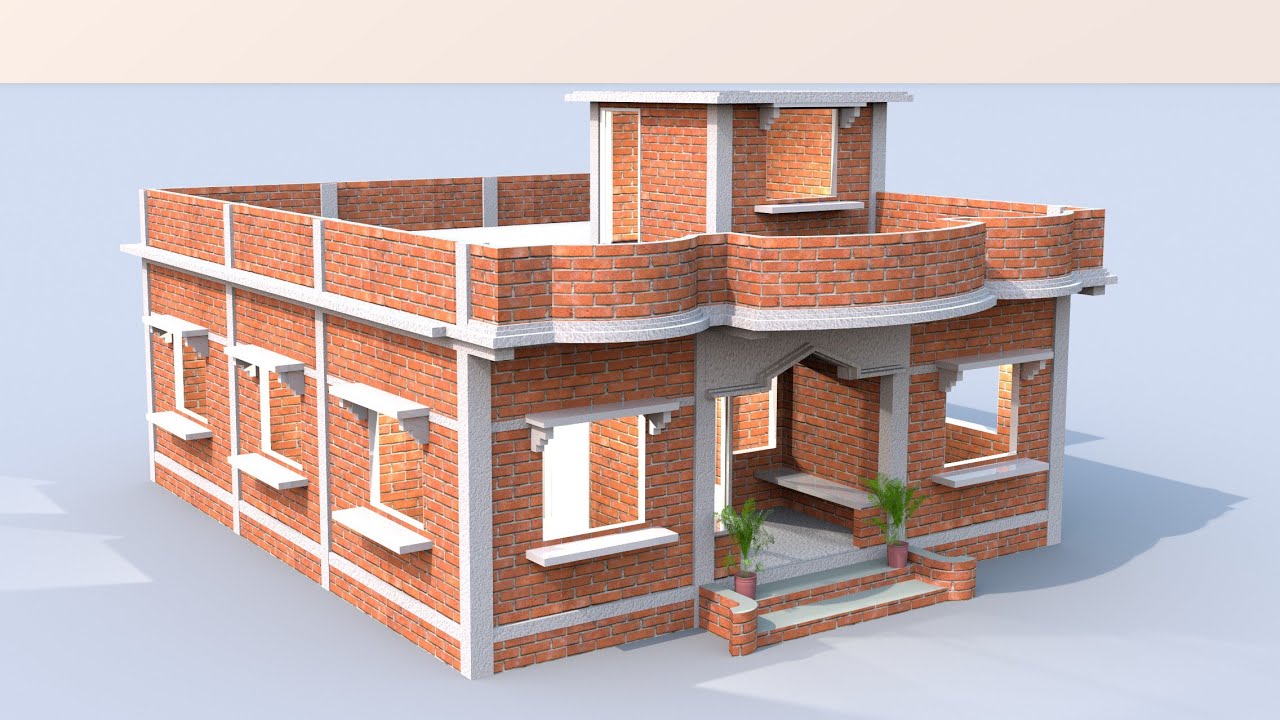Village home design evokes a sense of nostalgia and connection to nature. These homes, often characterized by their simplicity and integration with the surrounding environment, offer a unique aesthetic appeal. From traditional thatched roofs to modern interpretations using sustainable materials, village homes reflect the cultural heritage and ingenuity of their inhabitants. This exploration delves into the diverse architectural styles, interior design aspects, and sustainable practices that define village home design, showcasing its enduring charm and adaptability.
We’ll journey through various architectural styles found in villages across the globe, comparing traditional techniques with modern adaptations. We’ll also explore the importance of sustainability and how it seamlessly integrates with the design, ensuring minimal environmental impact. Finally, we’ll look at specific examples, highlighting the unique features that make each village home design truly special.
Defining “Village Home Design”

Village home design, often overlooked in the broader architectural landscape, represents a unique blend of functionality, sustainability, and cultural heritage. Unlike the uniformity of modern suburban developments or the grandeur of city skyscrapers, village homes are characterized by their intimate connection to the surrounding environment and their reflection of local traditions. Their designs prioritize practicality and resourcefulness, adapting to the specific climate and available materials of their location.Village homes are distinguished by their scale and simplicity.
They are typically smaller than suburban or urban dwellings, prioritizing efficiency over expansive space. The aesthetic appeal arises not from ostentatious displays of wealth but from a harmonious integration with the natural surroundings. Materials are often locally sourced, creating a sense of place and authenticity. The designs themselves are often simple, yet elegant, reflecting a deep understanding of how to build efficiently and sustainably within the limitations of the local environment.
Characteristics of Village Home Design
Village home designs are characterized by several key features that distinguish them from other architectural styles. Firstly, they often exhibit a vernacular style, reflecting the unique building traditions and materials available in a particular region. Secondly, their designs are deeply rooted in practicality and functionality, prioritizing essential living spaces over superfluous features. Thirdly, the integration with the natural environment is paramount, often incorporating local plants, natural light, and passive cooling techniques.
Dreaming of a rustic village home design? The charm of these homes often lies in their simplicity and connection to nature. To truly capture that essence, finding the perfect home design photo for my inspiration is key, like browsing through this amazing resource: finding the perfect home design photo for my inspiration. Once you’ve found the perfect image, you can start planning your own idyllic village retreat, incorporating those rustic elements you love.
Finally, they typically demonstrate a sense of community, often clustered together in close proximity, reflecting a shared cultural heritage.
Dreaming of a quaint village home design? Before you break ground, visualizing your ideal space is key. That’s where learning to creating a 3d home design model from scratch comes in handy. This allows you to experiment with layouts and aesthetics, ensuring your charming village home perfectly reflects your vision before any actual construction begins. From thatched roofs to cozy interiors, the possibilities are endless!
Key Elements Contributing to Aesthetic Appeal
The aesthetic appeal of village homes is not based on elaborate ornamentation or modern trends. Instead, it stems from a combination of factors, including the use of natural materials, the integration with the landscape, and the skillful craftsmanship evident in the construction. The harmonious relationship between the building and its environment is key; the house might be nestled into a hillside, utilizing natural features to enhance its aesthetic and functional qualities.
The skillful use of light and shadow, achieved through simple design features like overhanging eaves or strategically placed windows, adds to the overall charm. The sense of timelessness and enduring quality, often conveyed through the use of traditional building techniques and materials, is another contributing factor.
Typical Materials and Their Impact
The materials used in constructing village homes directly influence the design and aesthetic. Locally sourced materials like timber, stone, brick, clay, and thatch are commonly used, leading to designs that are both environmentally friendly and culturally relevant. For example, a home built primarily from timber will likely have a different aesthetic than one constructed from stone. The use of thatch roofs, common in warmer climates, not only provides insulation but also contributes to a unique visual character.
The choice of materials often reflects the availability of resources and the specific climatic conditions of the region, demonstrating a sustainable and adaptable approach to building. For instance, in regions with abundant timber, wooden structures with intricate joinery are prevalent, while in areas with limited timber, stone or brick might be the primary building material. The use of locally sourced materials often contributes to a lower environmental impact and a stronger connection to the local community.
Architectural Styles in Village Home Design
Village homes, the heart of many communities worldwide, showcase a remarkable diversity in architectural styles. These styles are deeply rooted in the local climate, available materials, and cultural traditions, resulting in a fascinating tapestry of design solutions across different regions. Understanding these variations offers insights into the ingenuity and adaptability of human settlements throughout history.
The architectural styles found in village homes are rarely purely singular; instead, they often represent a blend of influences and adaptations over time. Traditional techniques and materials might be combined with modern construction methods or design elements, leading to unique and often captivating results. This fusion reflects the dynamic relationship between tradition and progress in rural communities.
Variations in Village Home Architecture Across Regions, Village home design
Village homes exhibit striking differences depending on their geographical location. Homes in mountainous regions, for example, often feature steep roofs to shed snow, while those in arid climates might incorporate thick walls and small windows to regulate internal temperature. Coastal villages may see homes built on stilts to protect against flooding, while those in forested areas might utilize readily available timber in their construction.
These adaptations demonstrate the crucial role of the environment in shaping architectural choices.
Examples of Traditional and Modern Interpretations
Traditional village homes often utilize locally sourced materials like mud bricks, timber, bamboo, or thatch. Examples include the wattle and daub houses found in many parts of Africa, the adobe structures of the American Southwest, or the timber-framed houses common in parts of Europe. These designs reflect centuries of experience in building durable and sustainable homes using readily available resources.
Modern interpretations, however, often incorporate modern materials like concrete, steel, and glass while retaining elements of the traditional style to maintain a sense of place and cultural identity. This might involve using modern building techniques to create more energy-efficient versions of traditional designs or incorporating modern amenities while retaining the characteristic aesthetic of the original style.
Comparison of Village Home Styles
| Style | Key Features | Geographical Origin | Materials |
|---|---|---|---|
| Wattle and Daub | Framework of interwoven twigs and branches plastered with mud or clay. | Africa, Europe | Wood, Mud, Thatch |
| Adobe | Sun-dried mud bricks. | Southwest USA, Mexico, Middle East | Mud, Straw |
| Timber-framed | Wooden frame filled with wattle and daub, brick, or stone. | Europe, North America | Wood, Stone, Brick, Thatch |
| Stilted Houses | Elevated houses on posts or stilts. | Coastal regions globally | Wood, Bamboo, Concrete |
Interior Design Aspects of Village Homes: Village Home Design

Stepping inside a village home offers a glimpse into a unique blend of practicality and cultural expression. The interior design reflects the lifestyle, available resources, and the prevailing aesthetic preferences of the community. Unlike standardized urban homes, village homes often showcase a distinct character shaped by local traditions and environmental factors. Understanding these aspects is key to appreciating the charm and functionality of these dwellings.
The layout and spatial organization of village homes are often dictated by practical needs and available space. Many traditional designs prioritize functionality over expansive living areas. Rooms are typically compact and interconnected, reflecting a communal way of life where family members share spaces and activities. For instance, a central living area might serve as a kitchen, dining space, and gathering point.
Sleeping areas could be simpler, with minimal furniture and often shared among family members. In contrast, modern village homes are increasingly incorporating Western design influences, resulting in more compartmentalized spaces with dedicated bedrooms, bathrooms, and living areas. However, even in these modernized homes, the emphasis on community and shared spaces often remains.
Typical Layout and Spatial Organization
Traditional village homes often feature a simple, linear layout, with rooms arranged sequentially along a central corridor or pathway. This design maximizes space utilization and minimizes wasted area. Sleeping quarters are typically located away from the main living areas, providing privacy while maintaining easy access to shared spaces. Modern designs, while incorporating more separate rooms, often maintain a sense of openness by using techniques such as open-plan kitchens and living areas, creating a flow between different functional zones.
Consider a traditional Javanese Joglo house, where the main hall is a large, open space used for multiple purposes, contrasted with a modern Balinese village house that might incorporate separate bedrooms and bathrooms while still retaining some of the traditional open-air elements.
Traditional and Modern Interior Design Elements
Traditional village homes often feature natural materials like wood, bamboo, and thatch. Simple, handcrafted furniture is common, reflecting a minimalist aesthetic. Intricate carvings, woven textiles, and vibrant colours are often incorporated to add personality and cultural expression. For example, intricate wood carvings adorning doorways and window frames are a common feature in many Southeast Asian village homes.
Modern designs often incorporate these traditional elements in a contemporary context. Think of sleek, minimalist furniture made from sustainable wood, combined with brightly coloured textiles and traditional artwork. Modern materials like glass and concrete might also be used, but often in ways that complement the natural surroundings and traditional aesthetics.
Interior Design Features Enhancing Comfort and Functionality
The following features contribute significantly to the comfort and functionality of village homes:
These elements are chosen based on their ability to improve both the aesthetic appeal and the practical usability of the space, ensuring that village homes are not only visually pleasing but also comfortable and efficient for daily living.
- Natural Ventilation and Lighting: Maximizing natural light and airflow reduces reliance on electricity and improves indoor air quality. Large windows and strategically placed openings are crucial.
- Durable and Easy-to-Maintain Materials: Using materials like bamboo and treated wood ensures longevity and requires minimal upkeep, aligning with the practical needs of rural life.
- Multi-functional Furniture: Space-saving furniture that serves multiple purposes, such as a sofa bed or a storage bench, is highly valuable in smaller homes.
- Adaptable Design: A flexible design that can be easily adapted to changing needs and family sizes is crucial for long-term usability.
- Integration of Local Craftsmanship: Incorporating locally made furniture, textiles, and artwork adds a unique cultural touch and supports local artisans.
Sustainability and Environmental Considerations

Village home design isn’t just about aesthetics; it’s about creating homes that live in harmony with their environment. A sustainable approach minimizes the ecological footprint while maximizing the benefits of natural resources, resulting in homes that are both beautiful and responsible. This section explores the key elements of sustainable village home design, focusing on material selection, site integration, and efficient resource management.Sustainable materials and practices are fundamental to eco-conscious village home design.
The emphasis is on locally sourced, renewable, and recycled materials to reduce transportation emissions and support local economies. This often translates to using timber from sustainably managed forests, locally-fired bricks, and recycled construction materials. Furthermore, traditional building techniques, often passed down through generations, are revived, prioritizing durability and minimal environmental impact. These methods, frequently requiring less energy and producing less waste than modern counterparts, exemplify a commitment to long-term sustainability.
Sustainable Material Selection and Construction Practices
The choice of building materials significantly influences a home’s environmental impact. Bamboo, for example, is a rapidly renewable resource with high tensile strength, making it an excellent choice for structural elements and flooring. Rammed earth, a traditional technique using compacted earth and stabilizers, offers excellent thermal mass, reducing energy consumption for heating and cooling. Similarly, using locally sourced stone or clay bricks minimizes transportation costs and carbon emissions associated with material transport.
Employing recycled materials, such as reclaimed wood or repurposed metal, further reduces the demand for new resources and decreases waste. The construction process itself should also prioritize waste reduction, with careful planning and on-site material management.
Integration with Natural Surroundings
Village homes should seamlessly blend into their natural surroundings, minimizing disruption to existing ecosystems. This often involves careful site selection, avoiding sensitive habitats and prioritizing areas with minimal environmental impact. Passive design strategies, such as maximizing natural light and ventilation, reduce the reliance on artificial lighting and air conditioning. The orientation of the house, for instance, can be strategically planned to take advantage of prevailing winds and sunlight, minimizing energy consumption.
Green roofs and living walls can further integrate the home with its environment, providing insulation, reducing stormwater runoff, and creating habitat for local flora and fauna. The landscaping should also be considered, using native plants that require minimal irrigation and maintenance.
Energy Efficiency and Water Conservation
Energy efficiency and water conservation are crucial aspects of sustainable village home design. Passive design strategies, as previously mentioned, play a significant role in reducing energy consumption. Furthermore, the use of energy-efficient appliances, such as solar panels for electricity generation and high-efficiency lighting, significantly reduces reliance on fossil fuels. Water conservation measures include the use of low-flow fixtures, rainwater harvesting systems for irrigation and non-potable water uses, and greywater recycling for toilet flushing or garden irrigation.
These strategies, when implemented effectively, can dramatically reduce a home’s environmental footprint and contribute to a more sustainable lifestyle.
Modern Adaptations of Village Home Design
The charm of traditional village homes lies in their simplicity and connection to nature. However, modern lifestyles demand conveniences and technologies that were unimaginable in the past. Adapting these traditional designs for contemporary living presents both exciting opportunities and significant challenges, requiring a careful balance between preserving heritage and embracing progress. The key lies in innovative approaches that seamlessly integrate modern amenities without sacrificing the inherent beauty and character of village architecture.Modernizing village homes requires addressing several key aspects.
It’s not just about adding air conditioning; it’s about creating spaces that are both functional and aesthetically pleasing, respecting the historical context while enhancing livability.
Challenges and Opportunities in Adapting Traditional Designs
Adapting traditional village home designs for modern living presents a unique set of challenges. Preserving the original structure while incorporating modern plumbing, electrical systems, and insulation can be complex and costly. Finding skilled craftsmen familiar with both traditional techniques and modern building codes is also crucial. However, the opportunities are equally compelling. Modern adaptations can enhance energy efficiency, improve living comfort, and increase the market value of these homes, making them attractive to a wider range of potential residents.
The integration of sustainable materials and technologies further enhances the appeal and environmental responsibility of these renovated homes.
Integrating Modern Technology and Amenities
Modern technology can be subtly integrated to enhance the functionality of village homes without compromising their aesthetic appeal. For instance, solar panels can be seamlessly incorporated into the roof design, providing a renewable energy source while maintaining the traditional roofline. Smart home technology, such as automated lighting and climate control systems, can be installed discreetly, enhancing convenience and energy efficiency.
Modern, energy-efficient appliances can replace older models without altering the overall kitchen design. Consider a renovated kitchen maintaining its original rustic charm, yet equipped with a modern induction cooktop and a smart refrigerator. Similarly, bathrooms can be updated with modern fixtures while retaining the original character through the use of traditional materials and finishes.
Balancing Tradition and Modernity
The successful adaptation of village home designs hinges on finding the right balance between preserving traditional elements and incorporating modern conveniences. This requires a sensitive approach that respects the historical significance of the building while enhancing its functionality for modern living. For example, maintaining original timber beams or exposed brick walls while adding modern insulation and soundproofing can create a harmonious blend of old and new.
Using traditional building materials like clay tiles or locally sourced stone in conjunction with modern techniques ensures that the renovations are both aesthetically pleasing and environmentally responsible. The integration of modern technology should be unobtrusive, complementing the existing architecture rather than overshadowing it. The goal is to create a space that feels both authentic and comfortable, reflecting both the heritage of the building and the needs of its modern inhabitants.
Illustrative Examples of Village Home Design

Village home design offers a fascinating spectrum, from traditional structures deeply rooted in local heritage to modern interpretations prioritizing sustainability and contemporary living. Exploring specific examples illuminates the diversity and adaptability of this architectural style.
Traditional Village Home Design in the Philippines
This example focuses on a traditional Filipinobahay kubo*, a design adapted to the tropical climate. The structure is elevated on stilts, protecting it from flooding and providing ventilation. The roof is steeply pitched, typically made of nipa thatch, efficiently shedding rain. Walls are often constructed from bamboo or woven materials, allowing for natural air circulation. Small, strategically placed windows offer shade and cross-ventilation, while maintaining privacy.
The overall structure is simple yet functional, reflecting a deep understanding of the local environment and materials. The interior is usually minimally furnished, emphasizing simplicity and practicality.
Modern Sustainable Village Home Design in the Netherlands
This design showcases a contemporary approach to village living, prioritizing sustainability and energy efficiency. Imagine a compact, two-story home built using locally sourced timber and recycled materials. The layout is open-plan, maximizing natural light and creating a sense of spaciousness. Large windows facing south optimize solar gain, while strategically positioned overhangs provide shade during summer months. The roof incorporates solar panels for renewable energy generation.
High-performance insulation and triple-glazed windows minimize energy loss. Energy-efficient appliances, such as heat pump systems and LED lighting, further reduce the environmental footprint. The use of greywater recycling systems contributes to water conservation.
Visual Representation: A Himalayan Village Home
Imagine a stone house nestled into the steep hillside of a Himalayan village. The structure is built using locally quarried stone, blending seamlessly with the surrounding landscape. The roof is heavily sloped, designed to withstand heavy snowfall. Small, deeply recessed windows offer protection from harsh weather conditions. The home features a central courtyard, providing a sheltered outdoor space.
The exterior is austere, reflecting the rugged beauty of the mountain environment. The interior, however, is warm and inviting, with traditional woven rugs and handcrafted furniture. The home’s design is a testament to the ingenuity of adapting architecture to extreme climates and limited resources. Thick stone walls provide insulation against the cold, while the orientation of the house maximizes solar gain during the shorter days.
The design is a clear reflection of both environmental considerations and cultural traditions.